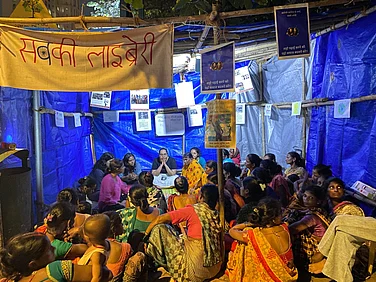“If you love Barbie, this movie is for you. If you hate Barbie, this movie is for you,” says the trailer of the much-awaited multi-starrer Warner Bros film.
The film which attempts to portray diversity by including Barbies and Kens from different backgrounds and races, and by addressing themes such as feminism, body positivity, and more, is all set for release on July 21. But with just weeks before its highly-anticipated theatrical release, some in Southeast Asia have decided that it’s not for them.
TIME Magazine’s cover for July 24 issue features the five actresses who play different Barbies in the upcoming film —Hari Nef, Alexandra Shipp, Margot Robbie, Issa Rae and Kate McKinnon. They all look different from the conventional stereotype that the doll has been known to represent in what appears to be the film’s attempt at inclusivity after facing criticism over promotion of ‘the ideal body type’.
“I don’t think you should say, ‘This is the one version of what Barbie is, and that’s what women should aspire to be and look like and act like’,” Barbie actress and Executive Producer Robbie was quoted as saying.
But it has taken decades for the 11-and-a-half-inch doll to get here, and yet some have found faults with its latest form of representation.
Barbie’s journey over the years
Directed by Greta Gerwig, starring Robbie and Ryan Gosling as Barbie and Ken respectively, alongside an ensemble supporting cast, this is the first live-action Barbie film after many computer-animated direct-to-video and streaming television films that have come and gone in the past few decades.
“You can be anything you want,” Barbie used to say in many advertisements that were splashed over children’s television sets. But its toy sets often came in the form of doll houses, kitchen sets, cleaning tools, or vanity sets that promoted home-making skills or beautification in a conventional sense and ran in complete contrast to its message. Owing to this, Barbie’s sales had sunk to $900 million — the lowest in 25 years. But this was eight years back.
In 2016, Barbie-maker Mattel made the biggest change to the doll since she debuted in 1959. The new Barbies had a wider array of skin tones, hair types, and varied body types, including ‘Curvy Barbie’. Years later, Barbie sales rose and hit a record $1.7 billion in 2021. There are currently 175 different Barbies.
Several actors involved in the film have been time and again quoted as saying that they would not be a part of the feat if not for Mattel’s ‘diverse Barbies’. And yet, here is Robbie on the film’s poster as the manifestation of Barbie.
There are definitely elements of diversity in the film, more than many major films that have come before it can claim. The array of Barbies of different races, body types, personalities, gender identities, and sexual preferences puts it light years ahead of other representations of the same doll. It is a step in the right direction but the woman on the poster is still tall, thin, and blonde, epitomising the very traditional standards of beauty and femininity that the doll has represented since its inception.
Vietnam bans Barbie
One would think that the aforementioned concerns would have motivated Vietnam’s recent decision to ban the movie. Instead, the political conflict stemming from territorial disputes provides a better explanation.
The bone of contention was the display of a map that includes the ‘nine-dash line’, a disputed maritime border that China has often used to lay claim on virtually all of the South China Sea — even though it was rejected in 2016 by an international tribunal.
Authorities in the Philippines, also troubled by the promotion of the ‘nine-dash line’, are currently deliberating whether or not to permit the release of the film.
While some say that the brief moment in the film will give China an upper hand to expand its influence, others warn that such outright bans could be excessive.
The plot of the movie has been fairly kept under the wraps. Whether or not the film has moved away from the traditional representation of the doll will only be known on July 21. But a lot is riding on Barbie, not just for Robbie and Gerwig, but also for Mattel. Whether fans flock to the theatre will likely determine the fate of Mattel’s future film endeavours.


























